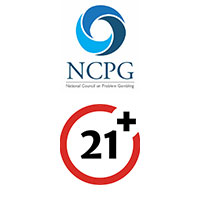Blackjack Cheating : Marked Cards
For as long as there have been playing cards, there has been players looking to mark them in some way so that they can cheat (with the exception of, maybe, magicians). It doesn’t matter the game; blackjack, poker, baccarat, war and so on. Any card game where it’s important to know the values of the cards you’ll find cheaters trying to mark them. Don’t believe us? Check out this recent CNN.com story. Archie Karas, a well known and for the most part profitable gambler was allegedly caught marking cards at the San Diego Baronas Casino.
Marking Card Techniques
To get marked cards into a game, a cheater will do one of three things:
- Mark their own cards, and then try to integrate them into the game. That could mean integrating individual cards, swapping decks or giving fixed decks to inside dealers (accomplices).
- Mark the cards while playing.
- Have someone else mark the cards in advance, leave and then the cheater sits down to play with the marked cards already in circulation.
Each comes with it’s own pros and cons. More importantly, however, is how they mark them. Lets look at all the ways.
Scratching: Scratching is marking the cards using your fingernail, or some other device like a razor blade, lighter or chips. You might remove some ink/color, leave a small cut or mar the surface in some way.
Block out: Blocking out is the process of using the same color ink (as the card back) to color in a small section that’s usually white. The disadvantage to blocking out is that it’s hard to read from across the table.
Cut out: Cutting out is the opposite of blocking out. Cheaters will remove a portion of the card, usually color, to reveal the white underneath. To make an obvious example, you might cut out a small portion of the center of the heart on the ace of hearts.
Dull Spots: This is altering the shine that’s on playing cards. You create a dull spot using a number of methods including placing an iron on the cards (if you bring in your own deck), using something acidic like lemon juice or placing a few drops of alcohol or water and letting it sit for a second before wiping it up. This is hard to detect for both cheaters and casino staff because the light has to hit the cards from the right angle to see the dull spot.
Daub: The term daub literally means a thick or sticky substance. This can be anything, including eye shadow, graphite, ash, dirt or anything else that you can apply with your finger — kind of like giving a fingerprint, but (hopefully) more subtle.
Crimp: Crimping is what most people probably think of when thinking about marked cards. What the marker does is bend the cards in some way, like creasing the corner or perhaps bending the entire card to put a slight "bow" in it.
Luminous: This method requires special ink and glasses or contact lenses. The cards will be marked with a special ink that’s otherwise unnoticed unless you’re wearing the special lenses. (See this article on a cheater caught using this method)
Video luminous: This is like the luminous method, except that the ink can only be seen using special electronics (cameras) with filters. The process will include someone on the TV end, watching the action (through the filter), then relaying the information to the a player at the table that has an earpiece.
Note: Video luminous isn’t only used for cheating. It’s also used to spot cheaters.
Shade/Juice: This process changes the shade of the playing card.
Trim: The playing cards are trimmed in some way — the sides are narrower, the card is made shorter or perhaps the corner of the card is rounded (even more).
Puncture / Pegging: This process is also known as dealing a blister. Cheaters will somehow create a small impression in the card that looks similar to brail. This is a very risky method, though, since a blister in the card will be very noticeable to the other players.
As you can see, most of these methods don’t require advanced technology or tools, but supplies that nearly every person carries on them or has in their home.
Detecting Marked Cards
Marked cards can be found using one of the following methods:
Gamblers Riffle: Think of this like one of those old story flip books. What you do is flip through a deck of cards. What you’re looking for are any changes in the design. In other words, if you come across a deck of cards that has been painted, blocked or cut out, the design will suddenly change and jump around.
Reflective light: Shine a light on the back of a deck of playing cards and look for any (obvious) dull spots.
Eye in the Sky + Dealers: Dealers are trained to know what to look for. If and when they spot a potential issue, they’ll let the pit boss and security know about it, and those guys will then review the tapes.
Marking Cards Summary
There are a lot of ways to mark cards, and I’m sure card markers are coming up with more ideas all the time. The biggest challenge with card marking is that many casinos do now allow you to touch your cards, which is usually the case (in my experience) with blackjack. So just touching your cards can arouse suspicion. So in those cases a cheater would either need to bring his own deck in (probably working with the dealer), pass on this method or find a different game where the players can touch their cards.
